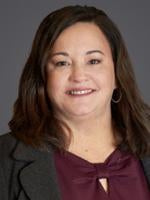On January 8, 2021, the California Division of Occupational Safety and Health (Cal/OSHA) issued an updated version of its frequently asked questions (FAQs) guidance, “COVID-19 Emergency Temporary Standards Frequently Asked Questions,” about COVID-19 Emergency Temporary Standards. The FAQs address many issues about which employers had questions, including paid time off and exclusion pay.
Under the emergency temporary standards, employers must “[e]xclude from the workplace employees who test positive for COVID-19 and employees with COVID-19 exposure.” The standards define “COVID-19 exposure” as “being within six feet of a COVID-19 case for a cumulative total of 15 minutes or greater in any 24-hour period.” If the positive test or exposure is work-related, the standards require the employer to continue an excluded employee’s pay and benefits until the employee satisfies the return to work criteria.
The FAQs clarify some of the questions that employers have expressed about exclusion pay:
-
The employer must provide exclusion pay only if the employee otherwise is “able and available to work.” According to the FAQs, “if an employee is unable to work because of his or her COVID-19 symptoms, then he or she would not be eligible for exclusion pay and benefits.… The employee, however, may be eligible for Workers’ Compensation or State Disability Insurance benefits.”
-
Similarly, according to the FAQs, an employer need not provide exclusion pay if the employee is unable to work for “reasons other than protecting persons at the workplace from possible COVID-19 transmission.” These reasons may include “a business closure, caring for a family member, disability, or vacation.”
-
The FAQs emphasize that if an employee claims a workplace exposure, “[the] employer should take any reports seriously and should investigate any evidence of an exposure.”
-
The FAQs do not provide targeted guidance to employers as to how to rebut the statutory presumption that a COVID-19 injury is work-related. The FAQs simply state that employers should “conduct[] comparable investigations and produc[e] comparable evidence to show it is more likely than not that an employee’s COVID-19 exposure did not occur in the workplace.” California Labor Code section 3212.88(e)(2), which was part of Senate Bill 1159, provides that an employer’s attempt to rebut the presumption may include “evidence of measures in place to reduce potential transmission of COVID-19 in the employee’s place of employment and evidence of an employee’s nonoccupational risks of COVID-19 infection.”
-
Cal/OSHA will enforce exclusion pay by issuing citations and requiring abatement.
-
Cal/OSHA does not consider “employee[s] receiving workers’ compensation temporary disability benefits for wages lost during the period in which they are excluded from the workplace to be ‘able and available to work.’” An employee cannot receive temporary disability benefits and exclusion pay.





 />i
/>i
